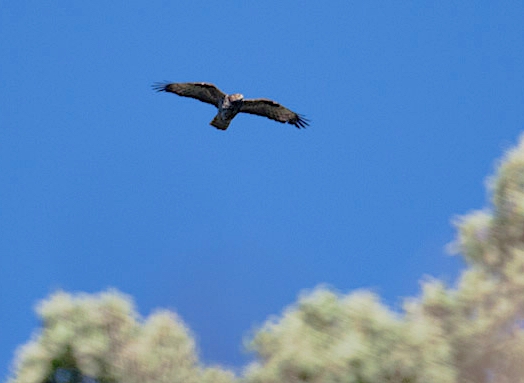Examples of tool-use behaviours by animals outside foraging contexts are scarce and almos exclusively limited to primates. This work documents a case of tool use in the European Honey-buzzard (Pernis apivorus), a forest raptor that uses green twigs cut from maple trees (Acer monspessulanum) as a tool to attract ants. Every morning, Honey Buzzards collectec fresh maple twigs, spread them on the ground, and stretch their wings full-length. Based on postural similarities to other bird species known to grab ants and rub them into their feathers (i.e. anting behavior), it is hypothesized that through this behavior, this bird may attract ants to remove parasites. This study experimentally demonstrates that buzzards are selective in their choice of tools, as maple twigs are not only the easiest to break, but also attracted the largest number of ants compared to most plant species in the community. These results indicate that some birds can be classified as having high cognitive abilities, which allow them to perform complex behaviours. informacion[at]ebd.csic.es. Camacho & Potti (2018) Non-foraging tool use in European Honey-buzzards: An experimental test. PLoS ONE 13(11): e0206843.
https://doi.org/10.1371/journal.pone.0206843

 Las altas temperaturas están provocando que las lagunas y las marismas de Doñana pierdan agua rápidamente
Las altas temperaturas están provocando que las lagunas y las marismas de Doñana pierdan agua rápidamente




